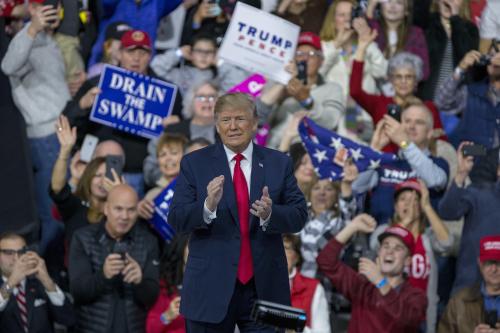As the November 2nd elections draw near, pundits and pollsters are increasingly warning that voters will unleash their anti-incumbent fury at the ballot box. Maybe it’s the Halloween spirit, but some of these scenarios are starting to sound like zombie scenes from a cheap horror film. That’s too bad since, lost amid the thrills and chills of the top candidate races, are some important issues that voters will decide further down the ballot.
In particular, voters will have a chance to weigh in on nearly 100 statewide tax and spending issues and 450 local tax measures this year. Some of these propositions represent backlashes against state tax actions to close record budget gaps. For example, voters will consider repealing sales tax increases in Massachusetts and Washington State. Property tax caps – perennial favorites that grow even more popular when real estate values plummet – will appear on the ballot in New York, Colorado, Indiana, Missouri, and Louisiana. In Colorado, voters will have an opportunity to slash income, vehicle sales, and telecommunications taxes.
Other measures would bring in new revenues. Bill Gates Sr. is backing a measure in Washington State to implement an income tax. In California, there are proposals to end corporate tax breaks and increase vehicle license fees for parks and natural resources. Still other measures would affect budgets indirectly – by increasing class sizes in Florida, terminating special funds for childhood health and land conservation in Arizona, and legalizing marijuana in California.
Beyond taxes and spending, ballot propositions may reshape budget processes. Oklahoma is proposing to keep up with the Joneses, tying its education spending per pupil to that of neighboring states. In California, voters will face ghosts of elections past as they confront yet more propositions on the state’s ability to borrow local funds and legislative vote requirements for budgets and fees. History may also repeat itself in Colorado – famous for its strict Taxpayer Bill of Rights (TABOR) – where voters may undo recent dilutions of this measure by prohibiting the state from incurring any new debt, ever.
Taken together, these propositions may do more to alter the size and scope of government than whomever voters decide to send to Sacramento, Denver, Boston, or Tallahassee. In the words of Pete Sepp, executive vice president of the National Taxpayers Union: “Unlike elected officeholders, ballot measures don’t change their mind.”
And that can be the problem. Proponents argue that ballot box budgeting is necessary to get voters what they want and curb legislative impulses toward ever higher spending. Like Ulysses at the mast, they argue, elected officials need to be restrained from temptation.
Yet voters may be in for a trick, not a treat. The empirical track record on state fiscal rules is often mixed. Strict balanced budget rules appear to be effective in holding down deficits and speeding adjustment to an economic shock. However, tax and expenditure limits tend to have a modest effect on state revenues and spending and may actually increase spending at the local level. They are more forceful when combined with supermajority requirements for tax increases and prohibitions on offloading responsibilities to local governments. Still, it is hard to link even the best known and most stringent limit – Colorado’s TABOR – to positive economic outcomes.
Worse, these limits may also lead to unintended consequences. Although spending limits lower the costs of borrowing in a recession, tax limits can increase them since financial markets get spooked when it’s not clear how states will repay their debts. Strict fiscal rules may also end up hurting vulnerable populations by forcing cuts to education among other vital services.
The problem with these limits is that they are blunt instruments. When they are ineffective, voters may try to modify them. But this only boxes in lawmakers and governors further, creating more obfuscation, more voter distrust, and, eventually, more of the limits that Californians face.
A better resolution to the dilemma between rules and discretion may be to design more flexible rules with triggers and links to real spending drivers like the share of school aged kids or poverty rate or labor costs – rather than just income, population and inflation.
Focusing on process may sound like “building a better mousetrap.” But doing so may be the key to restoring voter’s trust in government while also giving legislators the tools they need to slay budget demons.



Commentary
Budgeting in a Box
October 22, 2010